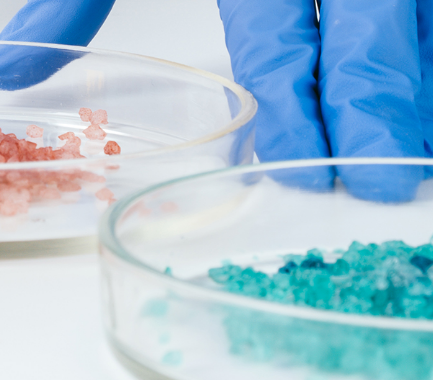Your contact
PENPET-Team - Hamburg

Christoph Meister
Sales
Tel. +49 (0) 40 - 675 7 99 30
sales@penpet.de
Get in touch with us.
Isobutanol
Isobutanol is a substance from the group of alkanols, which is mainly used as a solvent. The alcoholic compound is produced from propylene primarily by hydroformulation processes.
However, it can also be built up by microorganisms and used as a regenerative fuel. Isobutanol occurs naturally in numerous plants such as laurel, myrtle, blackcurrant, figs and pineapple.
The compound is mainly used as a solvent and thinner for intermediate and end products in the chemical industry. It is found, for example, in synthetic resins, detergents, coatings, paints, printing inks and fuels. The use of isobutanol as a fuel is also being tested in motor sports. Some carboxylic acid esters of the compound are used as plasticizers in plastics production.
We look forward to receiving your inquiry for an individual offer.
Delivered as a liquid in road tankers or tank containers, as well as in IBCs or in drums.
CAS no. 78-83-1
EINECS no. 201-148--0
Molecular formula: C4H10O
Synonyms: isobutanol, i-butanol, isobutyl alcohol, isopropyl carbinol, 2-methyl-1-propanol, 2-methylpropan-1-ol, 2-methylpropanol, i-BuOH, IBA
Areas of application: Solvent, thinner, fuel
More information
Isobutanol consists of four carbon atoms plus bonded hydrogen atoms, which, like the simpler isobutane, are arranged in a three-pointed star. One of the outer carbon atoms has a hydroxy group, which gives isobutanol its alcoholic properties.
The compound is made up of the same components as its three isomers 1-butanol, 2-butanol and tert-butanol, which are also important for the chemical industry. These differ in the arrangement of the alcoholic group and the carbon atoms within the molecule and can in some cases be produced using the same processes.
Isobutanol is a colorless liquid that smells sweet and is lighter than water. The compound can be mixed as desired with all customary organic solvents such as aldehydes, ketones, diethyl ether and other alcohols. However, isobutanol is only moderately soluble in water. With water and many of the organic solvents, it forms azeotropic mixtures which have a common boiling point and can no longer be easily separated by distillation.
Isobutanol is very flammable and has a flash point that is only slightly above normal room temperatures. Its vapors are heavier than air and can spread unnoticed along the ground. They form easily flammable and explosive mixtures with the ambient air. Isobutanol must therefore be kept away from hot surfaces, open flames, sparks, electrostatic charges and other sources of ignition. When the compound burns and decomposes, it produces hazardous gases such as carbon monoxide and carbon dioxide. Special fire protection requirements apply to the storage of isobutanol.
Isobutanol can undergo various reactions typical of organic compounds. These include dehydration to an aldehyde, oxidation to a carboxylic acid, esterification to an ester, and formation of an alkene through elimination of water. Isobutanol reacts with strong oxidizing agents, acid chlorides and acid anhydrides, generating a lot of heat. In contact with alkali metals and alkaline earth metals, and also when heated with aluminum, the compound forms dangerous vapors and gases such as explosive hydrogen. Isobutanol attacks some plastics and aluminum.
Skin contact, ingestion and inhalation of isobutanol can be harmful to health. The compound causes skin irritation and severe eye damage, including loss of vision. After contact, skin and eyes must be rinsed immediately with plenty of water.
Isobutanol irritates the airways and can cause irritation of the mucous membranes in the nose and throat, a dry cough and shortness of breath. Inhalation can also cause headaches, dizziness, drowsiness, nausea, unconsciousness and difficulty concentrating. Irritation of the gastrointestinal tract and organ damage to the kidneys and liver are possible when taking isobutanol. If accidentally swallowed, rinse the mouth out with water and then drink plenty of water.
Isobutanol is considered to be slightly hazardous to water and should not be released into the environment.
